Are you tired of wasting energy and money on inefficient thermostats in your home? You’re not alone. With the rise of smart home technology, smart thermostats have become increasingly popular for their ability to optimize heating and cooling systems, providing comfort while reducing energy consumption.
Table of Contents
ToggleThese innovative devices learn your schedule and preferences to adjust the temperature accordingly, ensuring your home is always at a comfortable temperature. By choosing the right thermostat, you can significantly reduce your energy bills and contribute to a more sustainable future.
Key Takeaways
- Understand the key benefits of using a smart thermostat in your home.
- Learn how smart thermostats differ from traditional thermostats.
- Discover the key features to look for in a smart thermostat.
- Explore premium, mid-range, and budget-friendly smart thermostat options.
- Get insights into real-world performance and value for different home setups.
Understanding Smart Thermostat Technology
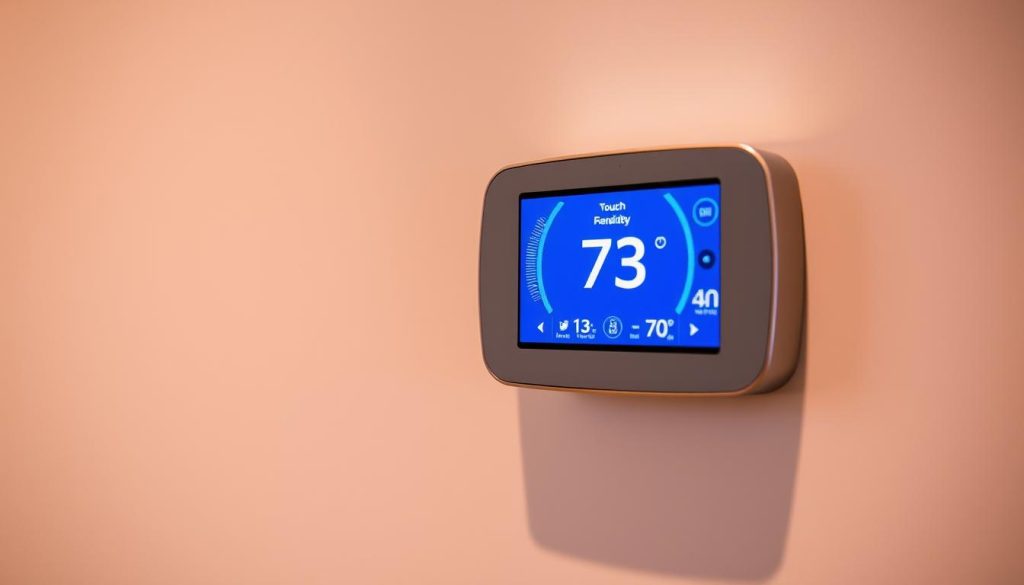
Smart thermostats have revolutionized home climate control by integrating advanced technology into heating and cooling systems. These innovative devices offer a range of features that not only enhance your home’s comfort but also contribute to significant energy savings.
What Makes a Thermostat “Smart”?
A smart thermostat is distinguished from its traditional counterparts by its connectivity features and advanced capabilities. The presence of Wi-Fi radios allows you to connect the thermostat to your home network and the internet, enabling remote control via smartphone apps or web interfaces. This connectivity means you can adjust your home’s climate from anywhere, ensuring that your living space is always at a comfortable temperature when you arrive home.
Furthermore, advanced smart thermostats incorporate machine learning algorithms that learn your schedule and preferences over time. By understanding your habits, these devices can automatically adjust temperatures to optimize both comfort and energy efficiency.
Key Benefits of Smart Thermostats
The benefits of installing a smart thermostat are multifaceted. One of the primary advantages is the potential for significant energy savings. Features like geofencing, occupancy sensing, and weather adaptation work together to minimize unnecessary heating and cooling, leading to lower utility bills.
Additionally, smart thermostats can integrate with other smart home devices, creating a cohesive ecosystem that enhances your overall home automation experience. As noted by industry experts, “Smart thermostats are a cornerstone of smart home technology, offering a blend of convenience, comfort, and energy efficiency that traditional thermostats simply can’t match.”
“Smart thermostats are not just about controlling temperature; they’re about creating a smarter, more efficient home.”
Smart Thermostat Reviews: Our Testing Methodology
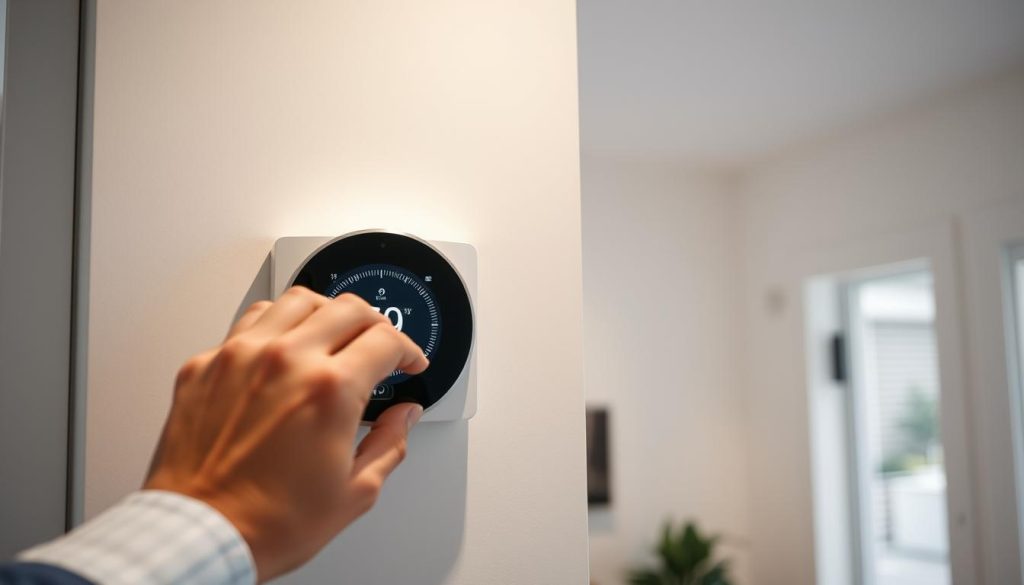
With nearly a decade of experience testing thermostats, we’ve established a robust testing methodology that covers various aspects of smart thermostat performance. Our smart thermostat reviews are based on rigorous testing protocols designed to evaluate performance across multiple dimensions of functionality and user experience.
Evaluation Criteria
To ensure a comprehensive assessment, we evaluated each smart thermostat based on several key criteria, including ease of use, installation complexity, temperature accuracy, energy efficiency features, smart home compatibility, and overall value. Our evaluation process is designed to provide a balanced view of each product’s strengths and weaknesses.
| Evaluation Criteria | Description | Importance Level |
|---|---|---|
| Ease of Use | User interface and experience | High |
| Installation Complexity | Setup and installation process | Medium |
| Temperature Accuracy | Precision in maintaining set temperature | High |
| Energy Efficiency Features | Features that help reduce energy consumption | High |
| Smart Home Compatibility | Integration with popular smart home systems | Medium |
How We Tested Each Model
We conducted controlled side-by-side trials in our lab, evaluating today’s top thermostats across multiple metrics. This approach allowed us to gather objective performance data and compare the features and options of each model. We also assessed each thermostat’s ability to maintain consistent temperature throughout different areas of a home and how quickly they responded to programmed changes.
Our long-term testing approach evaluates reliability, software update frequency, and manufacturer support over extended periods of use, ensuring that our reviews reflect real-world performance over time.
Essential Features to Consider When Choosing a Smart Thermostat
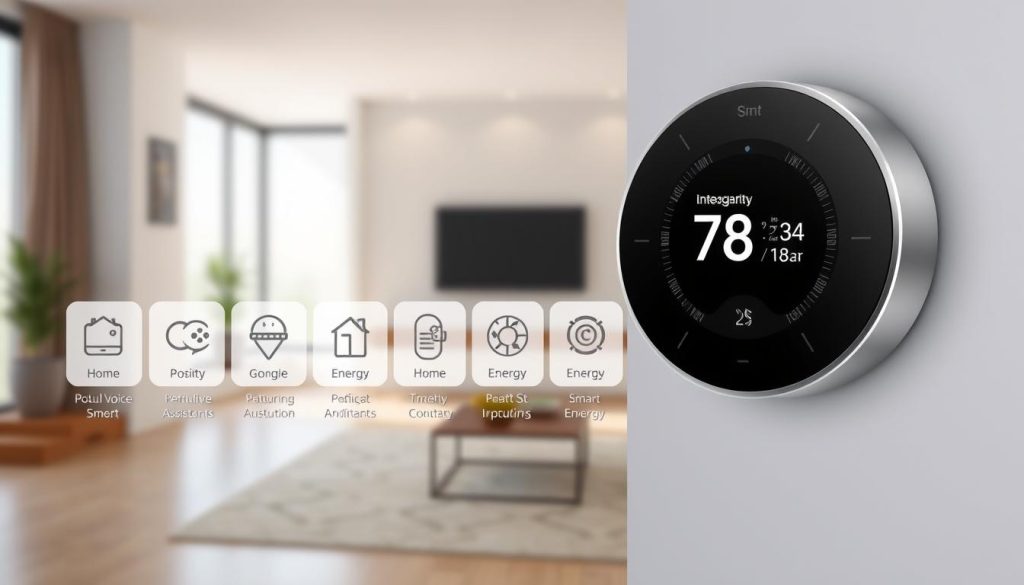
When selecting a smart thermostat, several key features must be considered to ensure compatibility and optimal performance. Your choice will significantly impact your home’s comfort and energy efficiency.
Compatibility with Your HVAC System
Not all smart thermostats work with every HVAC system. Before making a purchase, it’s crucial to check compatibility on your HVAC manufacturer’s website. Some systems, like heat pumps, multi-stage systems, and electric baseboard heating, require special consideration. Ensuring your smart thermostat is compatible with your system is vital for efficient operation.
Smart Home Integration Options
A smart thermostat that integrates well with your existing smart home ecosystem can enhance your home’s automation capabilities. Popular smart home platforms like Amazon Alexa, Google Assistant, and Apple HomeKit offer seamless integration with various smart thermostats. Consider a thermostat that supports your preferred ecosystem to unlock features like voice control and automated routines.
Energy Efficiency and Savings
Energy efficiency is a primary benefit of installing a smart thermostat. Features like occupancy detection, geofencing, and usage reporting can help maximize your energy savings. By optimizing your heating and cooling based on your schedule and preferences, you can significantly reduce your energy consumption.
Installation Requirements
The installation process for a smart thermostat can vary depending on your HVAC system and the thermostat model. Some installations require a C-wire, while others may need professional assistance. Understanding the installation requirements beforehand can help you prepare and avoid potential issues.
Premium Smart Thermostats: Top-Tier Performance
When it comes to premium smart thermostats, two models stand out from the rest: the Ecobee Smart Thermostat Premium and the Google Nest Learning Thermostat (4th Gen). These devices offer the most comprehensive feature sets and refined user experiences on the market.
Ecobee Smart Thermostat Premium
The Ecobee Smart Thermostat Premium is our top pick for its exceptional performance in optimizing energy efficiency. It includes advanced features such as built-in air quality monitoring and superior remote sensor technology.
Key Features and Specifications
The Ecobee Smart Thermostat Premium boasts an impressive array of features, including:
- Advanced remote sensor technology for precise temperature control
- Built-in air quality monitoring for a healthier indoor environment
- Voice assistant functionality for seamless control
- High-resolution touchscreen display for intuitive navigation
Pros and Cons
The Ecobee Smart Thermostat Premium has several advantages, including its comprehensive feature set and superior performance. However, it may require more complex setup compared to other models.
Who Should Buy This Model
This model is ideal for homeowners seeking a premium smart thermostat with advanced features and superior performance. It’s particularly suitable for those with complex HVAC systems or specific smart home ecosystems.

Google Nest Learning Thermostat (4th Gen)
The Google Nest Learning Thermostat (4th Gen) is another top-tier smart thermostat that offers sophisticated AI-driven learning capabilities and enhanced energy optimization algorithms. Its sleek hardware design makes it a stylish addition to any home.
Key Features and Specifications
The Google Nest Learning Thermostat (4th Gen) features:
- AI-driven learning capabilities for automated temperature adjustments
- Sleek and modern hardware design
- Enhanced energy optimization algorithms for reduced energy consumption
- Seamless integration with Google Home and other smart devices
Pros and Cons
The Google Nest Learning Thermostat (4th Gen) offers a user-friendly interface and robust performance. However, its functionality may be limited for those without a Google Home ecosystem.
Who Should Buy This Model
This model is perfect for homeowners who value simplicity and ease of use. It’s particularly suitable for those already invested in the Google Home ecosystem.
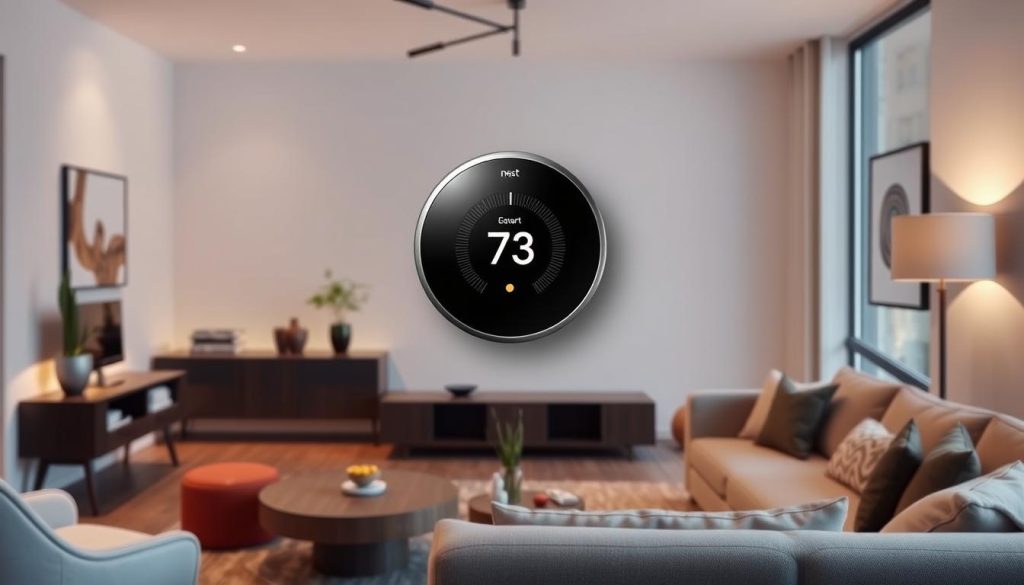
Mid-Range Smart Thermostats Worth Considering
Mid-range smart thermostats offer a compelling blend of features and price, making them an attractive choice for many homeowners. These devices balance robust functionality with more accessible price points compared to premium models.
Honeywell Home T9 Smart Thermostat With Sensor

Key Features and Specifications
The Honeywell Home T9 Smart Thermostat makes it easy to maintain uniform temperatures throughout your home. You can add up to 20 remote room sensors that help reduce heating costs by detecting whether a room is occupied or unoccupied. This smart thermostat is compatible with various HVAC systems, including multi-stage heating and cooling.
Key features include:
- Smart Response Technology for optimized heating and cooling
- Remote room sensors for precise temperature control
- Geofencing capabilities for automatic temperature adjustments
- Compatibility with Amazon Alexa and Google Assistant
Pros and Cons
The Honeywell Home T9 offers several advantages, including its ability to manage temperature across multiple zones and its compatibility with a wide range of HVAC systems. However, some users may find the initial setup process complex, and the device may not be compatible with all smart home systems.
Who Should Buy This Model
The Honeywell Home T9 is ideal for homeowners who need precise temperature control across multiple rooms or zones. It’s particularly suitable for larger homes where temperature variations are common.
Sensi Touch2 Smart Thermostat ST76
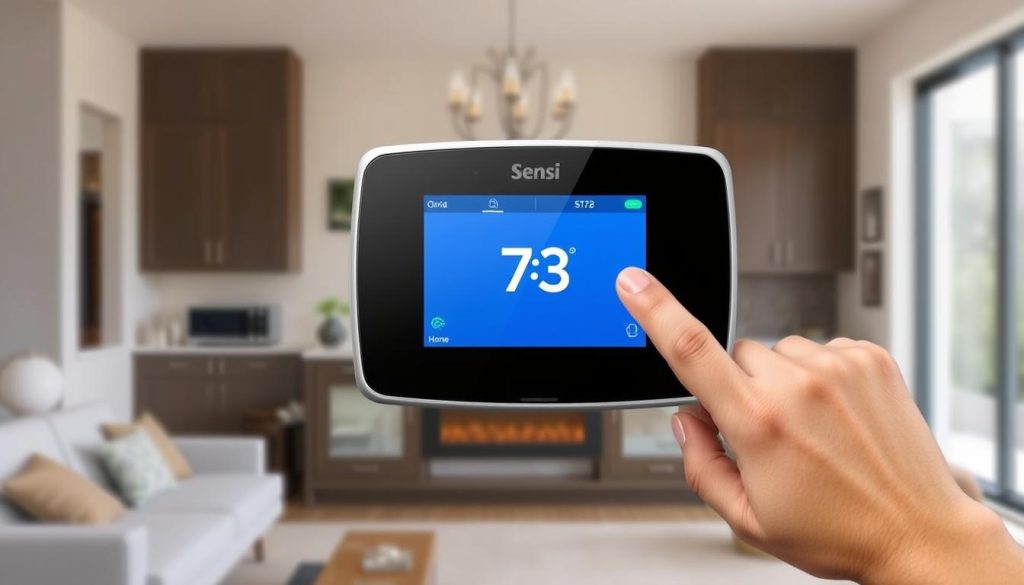
Key Features and Specifications
The Sensi Touch2 Smart Thermostat ST76 relies on a 4.3-inch color touch screen to control your heating and air conditioning. It boasts the largest touch screen among smart thermostats, providing an intuitive interface for users.
Notable features include:
- Large, responsive color touchscreen display
- Smart home integration with Amazon Alexa and Google Assistant
- Geofencing capabilities for energy savings
- Compatibility with most HVAC systems
Pros and Cons
The Sensi Touch2 offers a user-friendly interface and robust smart home integration. However, some users may find that it lacks certain advanced features available in premium models.
Who Should Buy This Model
The Sensi Touch2 is suitable for homeowners seeking a straightforward, easy-to-use smart thermostat with a large display. It’s an excellent choice for those who value simplicity and intuitive control.
Budget-Friendly Smart Thermostats That Deliver Value
For those looking to upgrade to a smart thermostat without overspending, there are several budget-friendly options to consider. These devices offer a range of features that can enhance your home’s comfort and energy efficiency without the premium price tag.
Amazon Smart Thermostat
The Amazon Smart Thermostat is a straightforward and user-friendly device that integrates seamlessly with Alexa, allowing for voice control and smart home automation. With its simple design and intuitive interface, it’s an excellent choice for those who want a hassle-free smart thermostat experience.
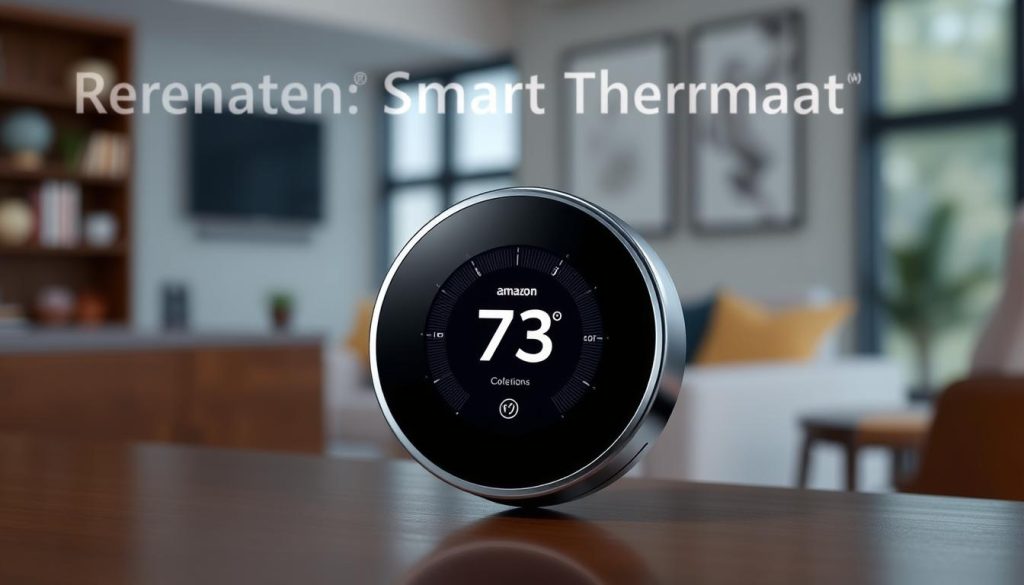
Key Features and Specifications
The Amazon Smart Thermostat boasts several key features, including:
- Seamless integration with Alexa for voice control
- Simple and intuitive interface
- Energy-saving features to help reduce your bills
- Compatibility with most HVAC systems
Its specifications include a temperature range suitable for most climates and a simple installation process that doesn’t require professional help.
Pros and Cons
The Amazon Smart Thermostat has several advantages, including its easy integration with Alexa and affordable price point. However, it may lack some advanced features found in more premium models, such as complex scheduling and remote sensing.
Who Should Buy This Model
The Amazon Smart Thermostat is ideal for those who:
- Are already invested in the Alexa ecosystem
- Want a simple, easy-to-use smart thermostat
- Are on a budget
Nest Thermostat (Standard Model)
The Nest Thermostat is another budget-friendly option that offers a range of features to enhance your home’s comfort and energy efficiency. With its sleek design and user-friendly interface, it’s a great choice for those who want a reliable smart thermostat.

Key Features and Specifications
The Nest Thermostat boasts several key features, including:
- Energy-saving features to help reduce your bills
- Compatibility with most HVAC systems
- Simple and intuitive interface
- Remote control via smartphone app
Its specifications include a temperature range suitable for most climates and a simple installation process.
Pros and Cons
The Nest Thermostat has several advantages, including its energy-saving features and user-friendly interface. However, it may lack some advanced features found in more premium models, such as complex scheduling.
Who Should Buy This Model
The Nest Thermostat is ideal for those who:
- Want a reliable and energy-efficient smart thermostat
- Are looking for a simple, easy-to-use device
- Are on a budget
Specialized Smart Thermostats for Specific Needs
When it comes to smart thermostats, one size doesn’t fit all, and specialized models can better meet specific homeowner needs.
For instance, certain thermostats are designed with particular heating systems or smart home ecosystems in mind, offering tailored solutions that mainstream models can’t match.
Sensi Smart Thermostat ST55 for HomeKit Users
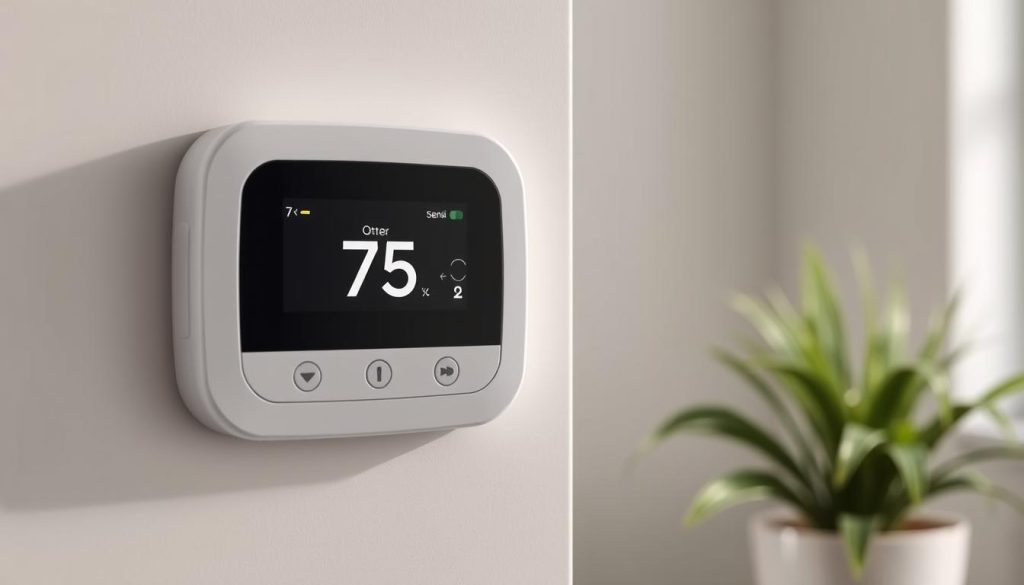
The Sensi Smart Thermostat ST55 stands out as a budget-friendly option that supports Apple HomeKit, making it an excellent choice for those deeply invested in the Apple ecosystem.
Despite its straightforward design, the ST55 offers robust functionality, including compatibility with Amazon Alexa and Google Assistant.
Key Features and Specifications
The ST55 boasts a user-friendly interface and a range of features, including:
- Compatibility with Apple HomeKit, Amazon Alexa, and Google Assistant
- A monochrome LCD display for clear temperature readings
- Geofencing capabilities for enhanced energy efficiency
Pros and Cons
Pros: Affordable, easy to install, and compatible with multiple smart home platforms.
Cons: The design may appear basic compared to more advanced models, and some users might find the lack of advanced features limiting.
Sinope TH1123WF for Line-Voltage Heating Systems
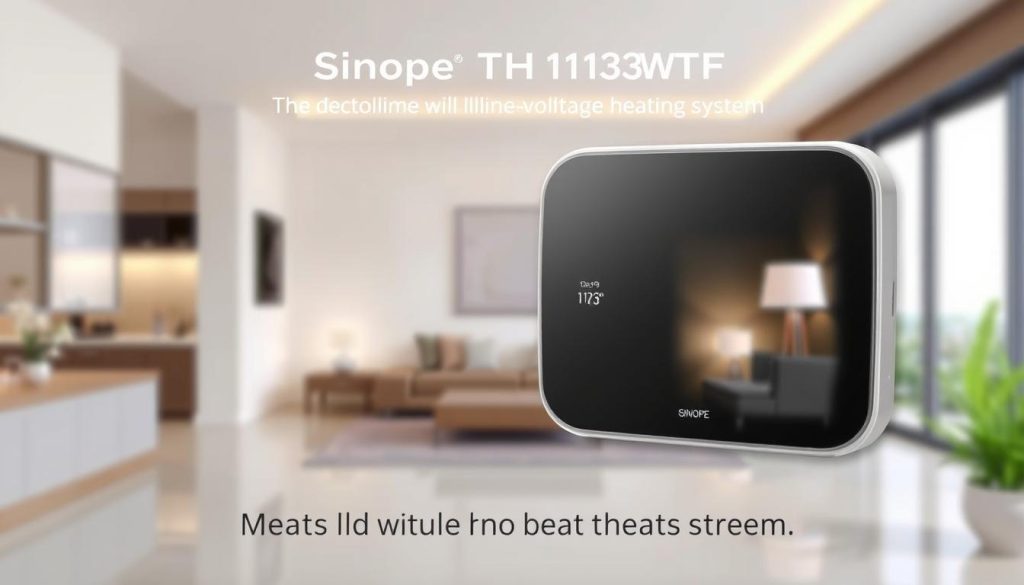
The Sinope TH1123WF is specifically designed for line-voltage electric heating systems, catering to homes with baseboard or radiant ceiling heating.
This thermostat offers Wi-Fi control, along with compatibility with Alexa, Google Assistant, and HomeKit, providing a versatile smart home solution.
Key Features and Specifications
The TH1123WF features:
- Compatibility with line-voltage heating systems
- Wi-Fi connectivity for remote control
- Support for multiple voice assistants
Pros and Cons
Pros: Tailored for line-voltage systems, affordable, and compatible with various smart home platforms.
Cons: Limited to line-voltage applications, and some users may find the feature set too basic.
Smart Thermostat Installation: What You Need to Know

Understanding the installation requirements of a smart thermostat is crucial for optimal performance. The process involves several key considerations to ensure your new thermostat works efficiently with your HVAC system.
When it comes to installing a smart thermostat, one of the primary concerns is the wiring. Most smart thermostats require a C-wire (common wire) for power, which can be a challenge if your home isn’t equipped with one. However, there are solutions available, including adapter kits and alternative wiring configurations.
DIY Installation Tips and Requirements
For those comfortable with DIY projects, installing a smart thermostat can be a manageable task. Here are some tips and requirements to keep in mind:
- Ensure you have the necessary tools, such as a screwdriver and wire strippers.
- Turn off the power to your HVAC system before starting the installation.
- Follow the manufacturer’s instructions, which may include online resources or a companion app.
- Check if your thermostat requires a C-wire for power; if not, consider alternative solutions.
| Brand | Installation Complexity | C-Wire Requirement |
|---|---|---|
| Ecobee | Moderate | Yes, but offers adapter kits |
| Google Nest | Easy to Moderate | No, but recommends it for some models |
| Honeywell | Moderate to Complex | Yes |
When to Call a Professional Installer
While many homeowners can successfully install a smart thermostat on their own, there are situations where it’s best to call a professional. If you have a complex multi-stage HVAC system, unusual wiring setups, or high-voltage systems, it’s advisable to seek expert help.
Additionally, if you’re unsure about any aspect of the installation process or feel uncomfortable working with electrical wiring or power systems, it’s best to consult a professional to ensure a safe and correct installation.
Maximizing Energy Savings with Your Smart Thermostat
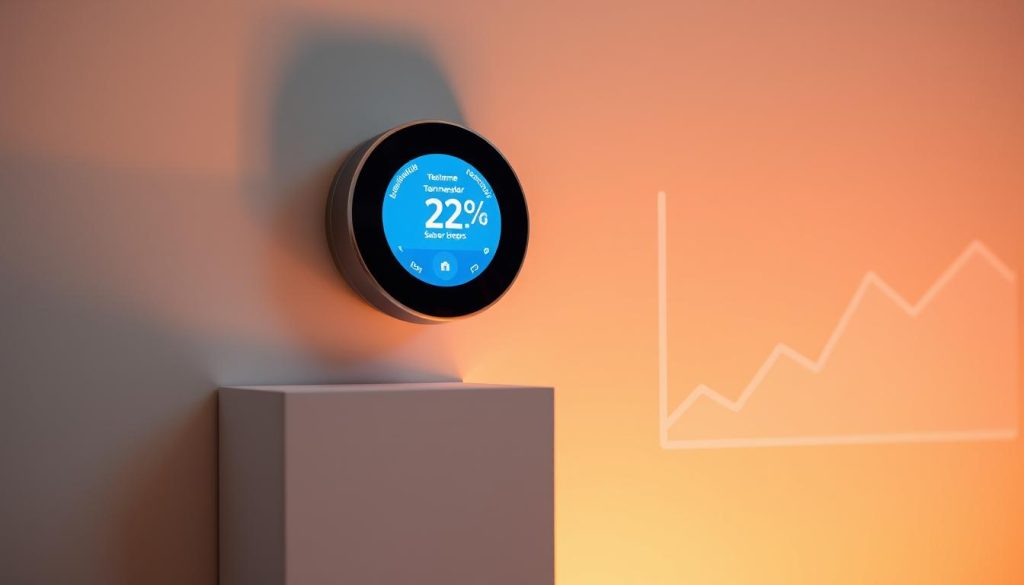
Maximizing energy savings with a smart thermostat involves more than just installing it. To truly benefit from this technology, you need to understand how to use its advanced features effectively. A smart thermostat can help you save energy and money by optimizing your home’s heating and cooling systems.
Programming Optimal Temperature Schedules
One of the key ways to maximize energy savings with your smart thermostat is by programming optimal temperature schedules. This involves setting different temperatures for various times of the day and adjusting them according to your daily routine. For instance, you can lower the temperature when you’re asleep or away from home and raise it when you’re active. By doing so, you can significantly reduce your energy consumption without sacrificing comfort.
- Create a seven-day heating and cooling schedule that matches your routine.
- Adjust the temperature settings based on your activity levels and preferences.
- Use the smart thermostat’s override feature to make temporary adjustments as needed.
Utilizing Eco Modes and Geofencing Features
In addition to programming temperature schedules, utilizing your smart thermostat’s eco modes and geofencing features can further enhance energy savings. Eco modes subtly adjust the temperature to maximize energy efficiency while maintaining comfort. Geofencing, on the other hand, uses your smartphone’s location to determine when you’re approaching home or leaving, automatically adjusting the temperature accordingly. By leveraging these features, you can ensure that your home is always at the optimal temperature without wasting energy.
By implementing these strategies, you can enjoy significant energy savings and reduce your utility bills, making your smart thermostat a valuable investment in your home’s comfort and efficiency.
Voice Assistant Compatibility and Smart Home Integration

Voice assistant compatibility is a crucial factor in choosing a smart thermostat that seamlessly integrates into your connected home. With the rise of smart speakers and voice-controlled devices, being able to adjust your thermostat with voice commands has become an essential feature for many homeowners.
When evaluating smart thermostats, it’s essential to consider their compatibility with popular voice assistants like Amazon Alexa, Google Assistant, and Apple Siri. The depth of integration varies across different thermostat brands and models.
Amazon Alexa Integration Options
Many smart thermostats offer robust integration with Amazon Alexa, allowing you to control your thermostat with voice commands. You can adjust the temperature, check the current temperature, and even create custom routines that involve your thermostat and other Alexa-compatible devices, enhancing your smart home experience.
Google Assistant Compatibility Features
Google Assistant compatibility is another critical aspect to consider. Google’s ecosystem leverages its AI capabilities to enhance thermostat functionality through predictive adjustments and routine suggestions, making it easier to manage your smart home and improving overall compatibility.
Apple HomeKit and Siri Support
For Apple-centric households, Apple HomeKit and Siri support are vital. While the options may be more limited compared to Amazon Alexa and Google Assistant, Apple HomeKit offers tight integration and enhanced privacy features, making it an attractive choice for those invested in the Apple ecosystem and looking for seamless voice control.
Remote Sensors: Enhancing Temperature Control Throughout Your Home
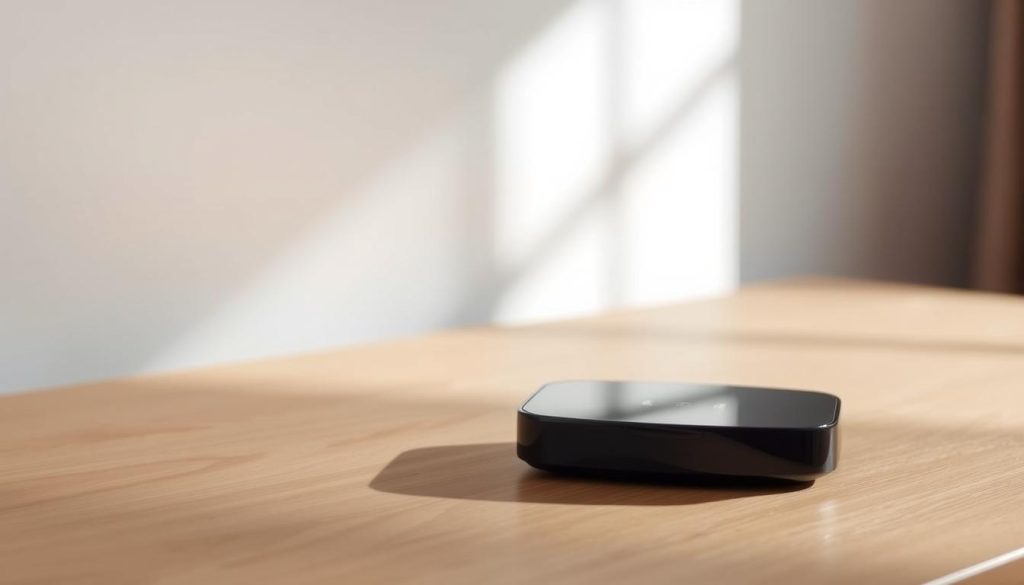
The integration of remote sensors with smart thermostats represents a significant advancement in home climate control, offering enhanced comfort and efficiency. By leveraging these sensors, you can achieve a more consistent temperature throughout your home, eliminating hot and cold spots that can make your living space uncomfortable.
Improving Comfort with Remote Sensors
Remote sensors improve comfort by allowing your smart thermostat to detect temperature variations in different parts of your home. This enables the thermostat to make more informed decisions about when to activate heating or cooling, ensuring that your home remains comfortable regardless of the outside weather conditions. Advanced sensors that include occupancy detection can further optimize comfort and efficiency by prioritizing temperature control in occupied rooms.
For instance, if you have a room that tends to be warmer or cooler than the rest of your home, a remote sensor placed in that room can help your smart thermostat adjust the temperature accordingly. This not only enhances your comfort but also potentially reduces energy waste by not heating or cooling unoccupied areas.
Top Smart Thermostats with Remote Sensor Capabilities
Several smart thermostat models offer advanced remote sensor capabilities, enhancing their ability to control temperature throughout your home. Here are some of the top models:
| Smart Thermostat Model | Maximum Sensors | Occupancy Detection |
|---|---|---|
| Ecobee Smart Thermostat Premium | Up to 32 sensors | Yes |
| Nest Learning Thermostat (4th Gen) | Supports Temperature Sensors | No |
| Honeywell Home T9 Smart Thermostat | Supports Remote Sensors | Yes |
When choosing a smart thermostat with remote sensor capabilities, consider the size of your home, the number of rooms you want to monitor, and whether occupancy detection is important to you. By selecting a model that fits your needs, you can enjoy enhanced comfort and potentially lower your energy bills.
Privacy and Security Considerations for Connected Thermostats
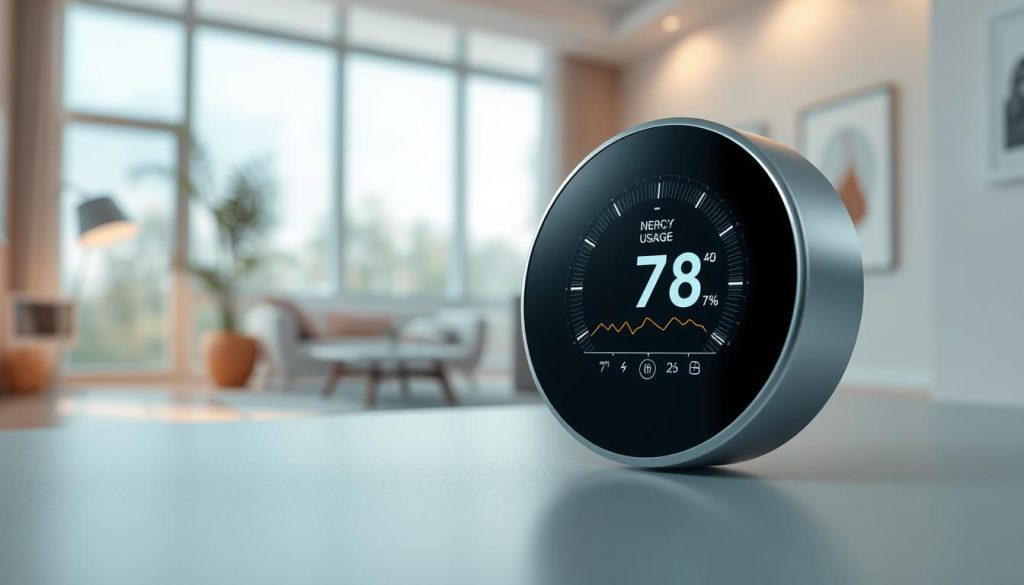
As you consider installing a smart thermostat, it’s crucial to understand the privacy and security implications of these connected devices. While smart thermostats offer numerous benefits, including energy savings and enhanced comfort, they also raise important concerns about data collection and potential security vulnerabilities.
Understanding Data Collection Practices
Smart thermostats collect various types of data, including temperature settings, energy usage patterns, and sometimes even location information through geofencing or geolocation features. For instance, enabling geolocation on your smart thermostat allows it to adjust your home’s temperature based on your proximity. Ecobee’s privacy policy is considered best-in-class, and they continue to support even their earliest models. However, it’s essential to review the data collection practices of your chosen smart thermostat manufacturer to understand what information is gathered, how it’s used, and whether it’s shared with third parties.
Protecting Your Smart Home Network
To ensure the security of your smart thermostat and overall home network, it’s vital to implement proper security measures. This includes configuring your network correctly, using strong passwords, and keeping your smart thermostat’s firmware up to date. Regular updates often include security patches that protect against known vulnerabilities. By taking these steps, you can significantly enhance the security and protection of your connected home devices.
Learning Thermostats: Comparing Adaptive Intelligence
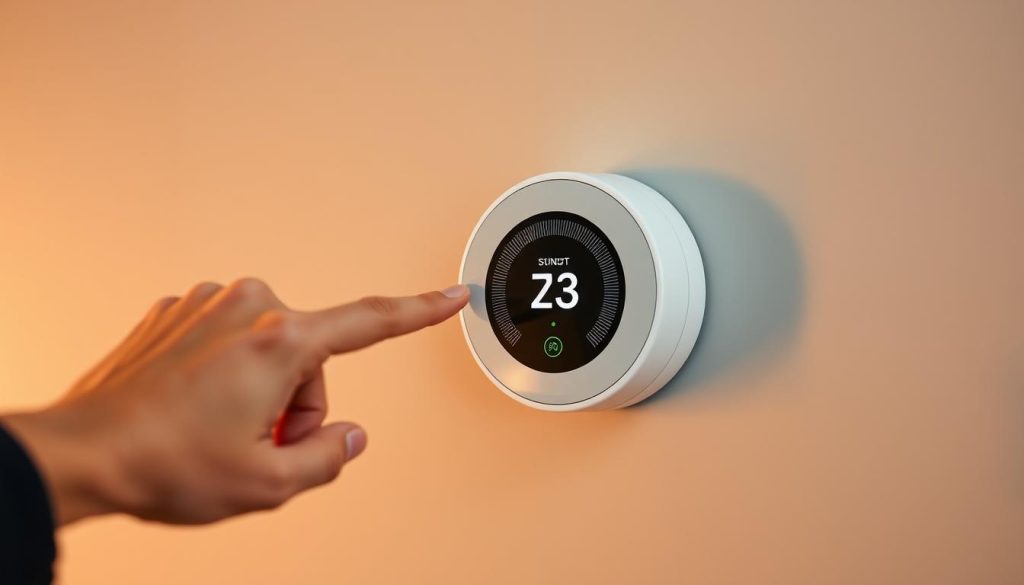
Learning thermostats have revolutionized home temperature control by adapting to your habits and preferences. These advanced devices can automatically adjust the temperature in your home, optimizing both comfort and energy efficiency. The Nest Learning Thermostat is a prime example, capable of creating a heating and cooling schedule based on your presence and preferred temperatures.
How Adaptive Learning Technology Works
Adaptive learning technology in thermostats like the Nest Learning Thermostat involves collecting data on your temperature adjustments and daily routines. This information is then used by sophisticated algorithms to recognize patterns and adapt the temperature settings accordingly. Over time, these thermostats can learn to make adjustments without manual intervention, potentially leading to significant energy savings.
Which Smart Thermostats Learn Most Effectively
Not all smart thermostats are created equal when it comes to adaptive intelligence. The Nest Learning Thermostat and Ecobee Smart Thermostat are often cited as examples of highly effective learning thermostats. These devices can quickly adapt to your schedule and preferences, providing both comfort and energy efficiency. When choosing a learning thermostat, consider its ability to integrate with your existing smart home system and its overall intelligence in adapting to your needs.
Future Trends in Smart Thermostat Technology

The future of Smart thermostat technology is rapidly evolving, with new features and innovations emerging regularly. As we explore the upcoming trends, it’s clear that these devices will play an increasingly crucial role in home energy management.
Upcoming Features and Innovations
The next generation of Smart thermostats will incorporate enhanced environmental sensing capabilities, including humidity, air quality, and VOCs (Volatile Organic Compounds). These advancements will enable homeowners to have a more comprehensive understanding of their indoor environment.
| Feature | Current Capability | Future Enhancement |
|---|---|---|
| Environmental Sensing | Basic temperature sensing | Advanced humidity, air quality, and VOC sensing |
| Predictive Algorithms | Simple scheduling | Sophisticated predictive learning |
| Integration | Limited to HVAC control | Expanded integration with renewable energy systems and whole-home energy management |
Integration with Whole-Home Energy Management Systems
The Smart thermostat is evolving beyond a simple climate control device to become a central hub for home energy management. Future models will likely integrate more seamlessly with other smart devices, enabling a coordinated approach to energy usage and production.
This integration will optimize energy efficiency and potentially reduce utility bills, making it a significant future trend in Smart thermostat technology.
Troubleshooting Common Smart Thermostat Issues
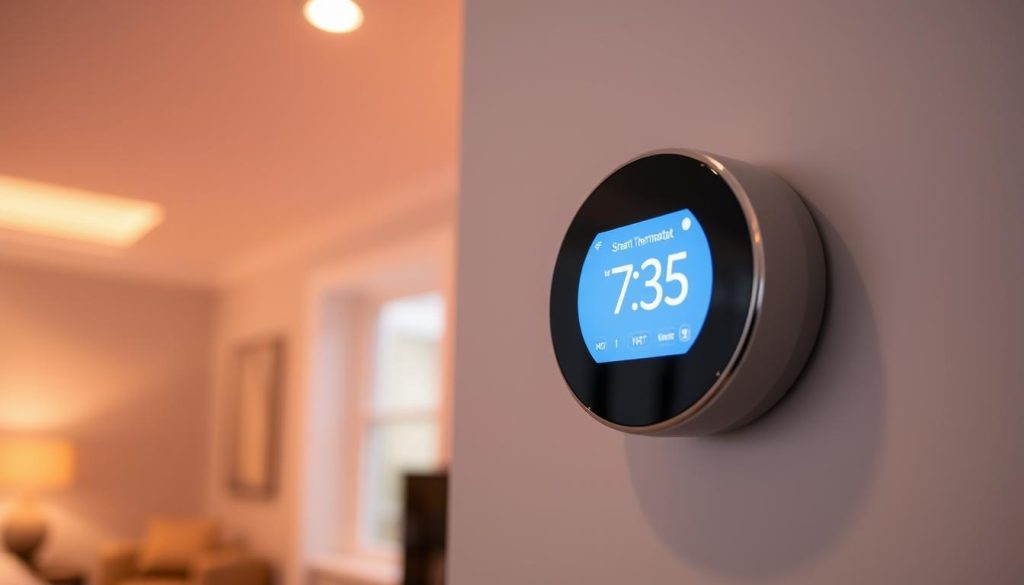
Even the most sophisticated smart thermostats can experience problems, but many can be resolved with simple troubleshooting steps. Smart thermostat reviews often focus on the features and benefits but rarely address the common technical issues users may encounter. In this section, we’ll provide comprehensive guidance on resolving connectivity problems, addressing temperature accuracy concerns, and managing power-related issues.
Resolving Connectivity Problems
Connectivity issues can significantly impact your smart thermostat’s performance. Common problems include Wi-Fi disconnections, app synchronization issues, and cloud service disruptions. To resolve these, try restarting your router and thermostat, checking your Wi-Fi network’s stability, and ensuring your thermostat’s software is up-to-date. Stable connectivity is crucial for your smart thermostat to function correctly.
- Restart your router and smart thermostat.
- Check your Wi-Fi network’s stability.
- Update your thermostat’s software.
Addressing Temperature Accuracy and Calibration
Temperature accuracy is crucial for your smart thermostat’s effectiveness. If you suspect your thermostat is inaccurate, verify its readings against a reference thermometer. Calibration adjustments may be necessary; consult your user manual for instructions. During our testing, we found that most thermostats were very accurate, with only a few, like the Ecobee and Nest, being off by over one degree. Accuracy is key to maintaining a comfortable temperature in your home.
Managing Battery and Power Concerns
For smart thermostats that rely on battery power, managing battery life is essential. Ensure you’re using the recommended battery type and follow the manufacturer’s guidelines for replacement. For thermostats that require a C-wire for power, verify that your HVAC system is compatible and that the C-wire is properly connected. Symptoms of inadequate power supply can include erratic behavior or complete system failure. Proper power management is vital for the reliable operation of your smart thermostat.
Conclusion: Selecting the Perfect Smart Thermostat for Your Home
The quest for the ideal smart thermostat ends here, as we’ve distilled the essential information to make an informed decision. Our comprehensive guide has covered all critical aspects to consider when selecting the right model for your home, from compatibility with your HVAC system to energy efficiency and savings.
Our top recommendation, the Ecobee Smart Thermostat Premium, stood out for its exceptional performance, keeping temperatures consistently pleasant throughout the year. It comes with a remote SmartSensor, which balances temperatures in your home, and features a built-in smart speaker for seamless integration with Alexa or Siri.
When evaluating smart thermostat options, consider your specific needs, including heating and cooling requirements, smart home ecosystem, and budget. By doing so, you’ll be able to choose a device that not only enhances your comfort but also helps you save money on energy bills. Ultimately, the right smart thermostat will provide a significant return on investment while contributing to a more sustainable future.
FAQ
How do I know if a smart thermostat is compatible with my HVAC system?
To ensure compatibility, check the thermostat’s specifications against your HVAC system’s type and configuration. Most smart thermostats work with common systems, but it’s crucial to verify compatibility before purchasing. You can also consult the manufacturer’s compatibility checker tool or contact their customer support.
Can I install a smart thermostat myself, or do I need a professional?
Many smart thermostats are designed for DIY installation, with some models offering more straightforward installation processes than others. However, if you’re unsure or uncomfortable with the process, it’s recommended to hire a professional to ensure a correct and safe installation, especially if you have a complex HVAC system.
How do smart thermostats help reduce energy consumption and save money?
Smart thermostats optimize heating and cooling by learning your schedule, preferences, and habits. They can automatically adjust temperatures when you’re away or sleeping, and some models offer energy reports to help you understand your energy usage. By minimizing unnecessary heating and cooling, smart thermostats can lead to significant energy savings.
What is geofencing, and how does it work with smart thermostats?
Geofencing is a feature that uses your smartphone’s location to determine when you’re approaching or leaving your home. When integrated with a smart thermostat, geofencing can automatically adjust the temperature to an energy-saving mode when you’re away and return to your preferred settings when you arrive home.
Are smart thermostats secure, and how do they protect my personal data?
Reputable smart thermostat manufacturers implement robust security measures, including encryption and secure data storage, to protect your personal data. It’s essential to review a manufacturer’s privacy policy and security practices before purchasing to ensure they meet your standards.
Can I control my smart thermostat remotely, and how?
Most smart thermostats come with a mobile app that allows you to control your thermostat remotely using your smartphone or tablet. You can adjust temperatures, change settings, and monitor energy usage from anywhere, providing you have an internet connection.
How do remote sensors enhance the performance of my smart thermostat?
Remote sensors can be placed in different rooms to provide a more accurate reading of your home’s temperature. They help your smart thermostat to adjust the temperature more effectively, ensuring a more consistent and comfortable temperature throughout your home.
What is the difference between a learning thermostat and a programmable thermostat?
A learning thermostat, like the Google Nest Learning Thermostat, can automatically learn your temperature preferences and schedule over time, adjusting the temperature accordingly. A programmable thermostat, on the other hand, requires you to manually set a schedule, although some may offer basic automation features.







